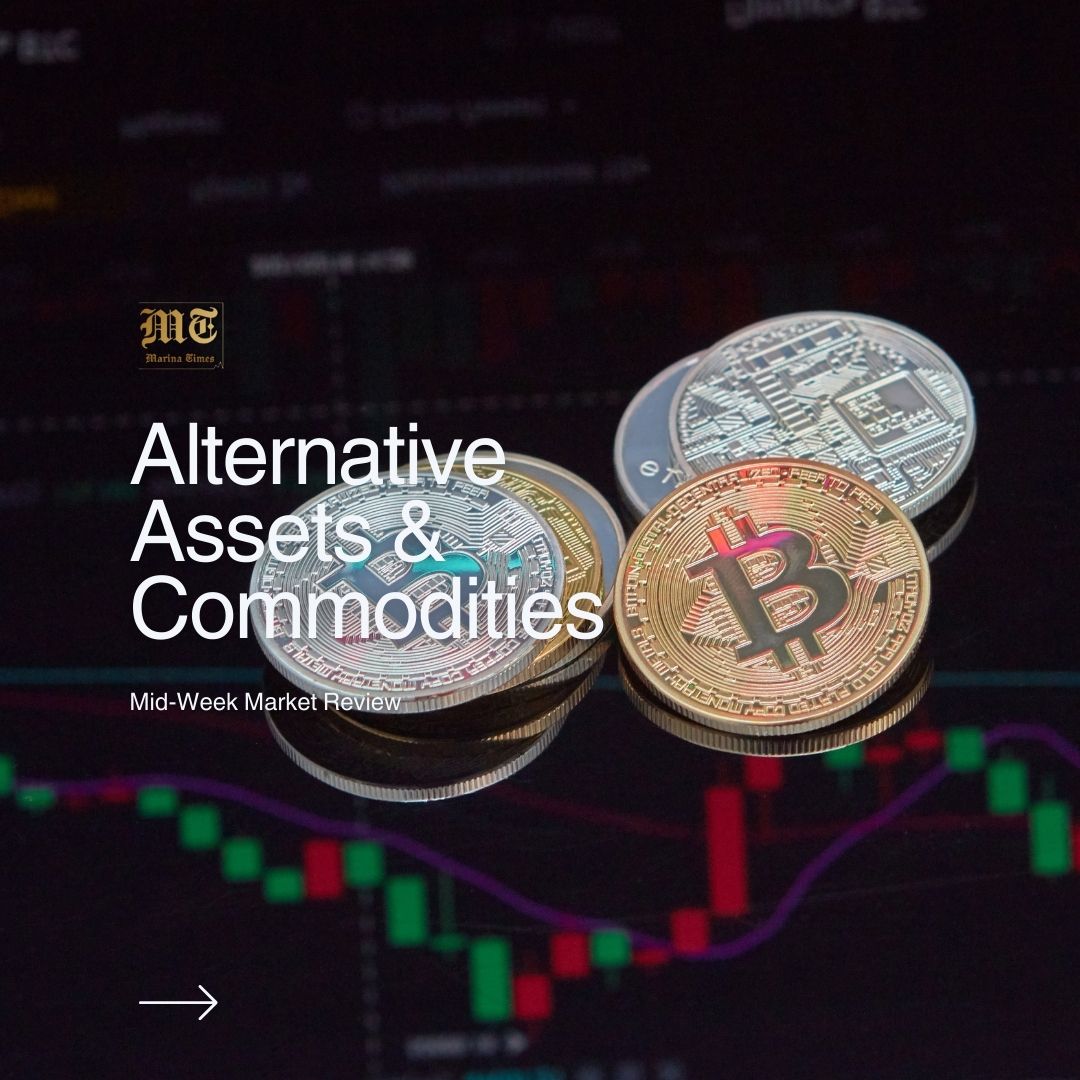

Crude oil prices experienced notable swings at the start of the week, sliding more than 1.5% on Monday amid encouraging developments in diplomatic negotiations between the United States and Iran. Brent crude futures declined by 2.03% to $66.47 per barrel, while West Texas Intermediate (WTI) fell by 1.58%, closing at $63.43 per barrel. These price movements were further amplified by reduced market activity owing to the Easter holidays, which typically reduce liquidity and heighten volatility.
Talks between US and Iranian officials have entered a constructive phase, with Iran’s Foreign Minister revealing that both sides had agreed to commence drafting a framework for a renewed deal. A senior US official echoed this sentiment, describing the progress as “very good”. Should these discussions culminate in a formal accord, it would likely pave the way for Iranian crude to re-enter global markets at scale, an outcome that could place additional downward pressure on oil prices.
While geopolitical optimism weighed on oil prices early in the week, a sharp reversal followed on Tuesday. Brent crude futures rebounded by 2.03% to settle at $67.82 per barrel, supported by the announcement of fresh US sanctions against key Iranian figures involved in crude and liquefied petroleum gas (LPG) exports. WTI prices also staged a recovery, edging closer to $65 per barrel by Wednesday. The sanctions, targeting an influential Iranian shipping magnate and his associated logistics network, raised the prospect of disrupted Iranian supply, helping to stabilise market sentiment.
Further supporting the price rebound was data indicating a substantial drop in US crude inventories (by an estimated 4.6 million barrels in a single week), marking what could be the steepest drawdown since November. This, coupled with a more upbeat tone in global trade discussions, particularly with India and Japan, and reassurances from the White House regarding the independence of the Federal Reserve, lent broader support to risk assets.
In view of these global developments, OPEC+ is proceeding with its plan to boost collective output by 411,000 barrels per day starting in May. However, this increase may be partially offset by additional production restraints from certain member states attempting to rectify previous overproduction.
For Nigeria, which pegs its 2025 oil revenue benchmark at $75 per barrel, this ongoing volatility presents a complex challenge. The initial dip below $67 per barrel places Nigeria’s projected fiscal revenues under pressure, with potential repercussions for budget implementation and foreign exchange inflows. The temporary recovery observed midweek offers some respite, but it also underscores the market’s fragility in response to geopolitical and economic crosscurrents.
A sustained influx of Iranian crude, should a nuclear deal be revived, would swell global supply and likely exert downward pressure on prices, thereby reducing Nigeria’s export earnings. Conversely, intensified US sanctions that constrain Iran’s export capacity might tighten supply and lend support to prices, a scenario that aligns more closely with Nigeria’s budgetary interests.
Furthermore, the broader economic context, marked by lingering US-China trade tensions and tariff-induced uncertainties, threatens to dampen global oil demand. A slowdown in global economic activity translates to reduced consumption, which could keep oil prices subdued even in the face of supply constraints.
Basically, Nigeria remains highly susceptible to the ebbs and flows of the international oil market. While recent price rebounds provide a degree of hope, the country must remain vigilant, exploring avenues to diversify its revenue base and insulate the economy from externalities.
The cryptocurrency market exhibited robust performance over the past week, with major assets like Bitcoin (BTC), Ethereum (ETH), XRP and Solana (SOL) posting significant gains. Bitcoin led with a 6% weekly increase, driven by institutional interest and a U.S. government proposal for a strategic cryptocurrency reserve. Ethereum rebounded by 10%, fuelled by global ETF developments and DeFi adoption. Regulatory advancements, including U.S. policy shifts and Hong Kong’s ETF approvals, underscored crypto’s growing mainstream acceptance. Emerging trends, such as tokenised gold and stablecoin volatility, highlighted both opportunities and risks in the evolving digital asset landscape.
Bitcoin (BTC) currently sits at approximately $94,000 with a weekly change of 6% upward.
Bitcoin’s consistent upward trajectory reflects renewed institutional confidence and its entrenched narrative as ‘digital gold.’ A pivotal catalyst was the U.S. government’s proposal to establish a strategic Bitcoin reserve, signaling potential state-backed adoption. This aligns with growing interest from corporate treasuries and hedge funds seeking inflation-resistant assets amid global economic uncertainty.
Continued institutional inflows and favourable regulatory developments could sustain Bitcoin’s bullish momentum, though macroeconomic factors like interest rate shifts warrant monitoring.
Ethereum (ETH) at the time of this report, sits at approximately $1,796. Which is up 10% from the previous week.
Ethereum staged a strong recovery from recent lows, driven by optimism surrounding Hong Kong’s approval of spot Ethereum exchange-traded funds (ETFs). Additionally, Ethereum’s blockchain continues to dominate decentralised finance (DeFi) and tokenisation use cases, with increased transaction volume signaling robust network activity. The prospect of further ETF approvals globally enhances ETH’s appeal to institutional investors.
Ethereum’s growth hinges on scalable layer-2 solutions and the broader adoption in tokenized real-world assets, though competition from rival blockchains remains a challenge.
XRP’s current price is approximately $2.25 with a weekly change of 7.6% upwards. Its gains stem from increasing institutional adoption and clearer regulatory frameworks, particularly in jurisdictions like the U.S. and EU. Ripple’s cross-border payment solutions continue to attract financial institutions, bolstering XRP’s utility.
Solana’s rally was amplified by Upexi’s announcement of a $100 million fund to build a Solana treasury, drawing parallels to MicroStrategy’s Bitcoin accumulation strategy. Solana’s high throughput blockchain and growing ecosystem of decentralised applications (dApps) further fuel investor enthusiasm.
Both assets benefit from institutional momentum, but XRP’s regulatory clarity and Solana’s technical scalability will be critical for sustained growth.
Trump Media and Technology Group announced its entry into the cryptocurrency sector, focusing on launching ETFs and other financial products in collaboration with Crypto.com and Yorkville America Digital. This move reflects a broader trend of mainstream and political entities embracing digital assets, potentially bridging traditional finance and crypto markets. The initiative could enhance market liquidity and attract retail investors, though its success depends on execution and regulatory approval.
An Executive Order from U.S. President Donald Trump proposes the creation of a national cryptocurrency reserve, encompassing: Bitcoin (BTC), Solana (SOL), Cardano (ADA) and Ripple (XRP).
This unprecedented policy positions cryptocurrencies as strategic financial assets, akin to gold or oil reserves. The proposal aims to strengthen the U.S.’s competitive stance against central bank digital currency (CBDC)-focused economies like China. If implemented, the reserve could drive significant demand for the included assets and legitimise crypto as a cornerstone of national financial strategy. However, legislative hurdles and geopolitical implications may delay or alter the plan.
On the regulatory front, Alex Mashinsky, founder of the now-defunct crypto lending platform Celsius, pleaded guilty to fraud charges. This high-profile case underscores the crypto industry’s ongoing reckoning with accountability and transparency. The plea may intensify scrutiny on other lending platforms and reinforce the need for robust compliance frameworks. While this could temporarily dampen investor confidence in certain sectors, it also signals a maturing market prioritising investor protection.
Hong Kong approved spot Bitcoin and Ethereum ETFs, marking Asia’s most aggressive push into institutional crypto products. This development positions Hong Kong as a regional leader in digital asset adoption, competing directly with the U.S. and Dubai. The ETFs are expected to attract significant capital inflows, particularly from Asian institutional investors, and could set a precedent for other jurisdictions to follow suit.
Crypto.com received full operational approval in Dubai, reinforcing the emirate’s goal of becoming a global cryptocurrency capital. Dubai’s favourable regulatory environment and tax incentives are drawing major crypto firms, boosting innovation in blockchain technology and digital finance. This approval enhances Crypto.com’s ability to serve Middle Eastern markets and could accelerate regional adoption of crypto services.
PAX Gold (PAXG), a digital asset backed by physical gold, experienced growth in issuance and market capitalisation, tracking the rising price of gold amid inflationary pressures and geopolitical tensions. Investors are increasingly turning to tokenised gold as a hybrid asset combining blockchain efficiency with gold’s time-tested stability. This trend highlights the growing appeal of real-world asset tokenisation, with potential applications in real estate, commodities and equities.
Stablecoins First Digital USD (FDUSD) and Ethena USDe (USDe) briefly lost their $1 peg last week, triggering temporary market unease before recovering. This incident underscores the fragility of stablecoin pegs during periods of low liquidity or market stress. While the rapid recovery mitigated a broader fallout, it emphasises the critical role of transparency, collateralization and liquidity management in maintaining stablecoin stability. Investors and regulators are likely to demand greater oversight of stablecoin issuers to prevent systemic risks.
The cryptocurrency market is at a pivotal juncture, with institutional adoption, regulatory clarity and global competition driving growth. Bitcoin and Ethereum remain the market’s anchors, supported by ETF approvals and strategic reserve proposals. XRP and Solana are carving out significant niches, fuelled by institutional strategies and technological advantages. However, challenges such as stablecoin volatility and regulatory enforcement highlight the need for resilience and adaptability.
In the coming months, the U.S. strategic reserve proposal, if realised, could redefine crypto’s role in global finance, while Hong Kong and Dubai’s advancements signal a multipolar crypto outlook. Investors should monitor macroeconomic trends, regulatory shifts, and technological innovations to route this dynamic market effectively.